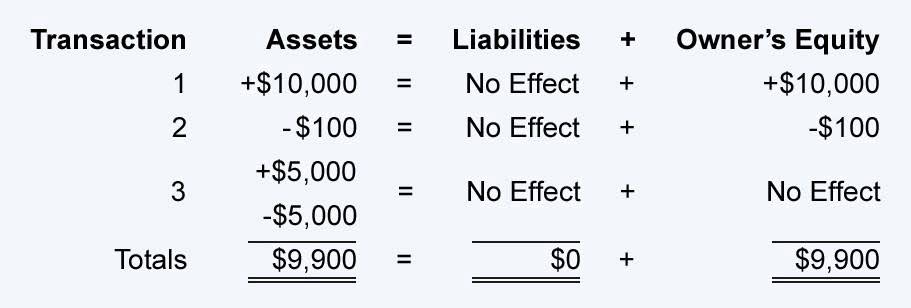Bookkeeping
What Are Accrued Trade Payables?

You get what you need today and pay later, usually within 30, 60, or 90 days. It sounds simple, but managing trade payables effectively is critical to your cash flow, vendor relationships, and financial accuracy. When this owed amount to suppliers is paid by the company immediately, in cash, then it is not considered as trade payables and is not a liability. In the accounting system, businesses record trade accounts payables in a separate accounts payables account. It is extremely important that accounts payable personnel, bookkeepers and accountants in your organization understand the difference between accrued liabilities and trade payables.
- Delayed payments can strain vendor relationships and result in late fees, while paying too early may unnecessarily reduce cash reserves.
- What’s important is that both give you the ability to optimize your cash flow (if used correctly).
- When trade payables and receivables are paid on time, it strengthens relationships with suppliers significantly.
- As such, these companies can’t afford to lose their key vendors due to inefficient trade accounts payable processes resulting in late, lost, or faulty payments.
- The trade routes were shaped by geography as much as anything because there was no easy route from the Americas or Europe to the Far East.
- Or they can overcharge for a delivery from a real supplier and take a cut.
Beyond Numbers: Understanding the Fascination Of Gianetta Baril Age

With trade payables, you have the opportunity to pay for what goes into a good or service after the sale is already made. The next stage of the payables procedure is to enter the purchase day book details into the purchase ledger. The purchase ledger is a subsidiary ledger which is part of the double entry bookkeeping process.
Accounts Payables: Unifying the Universe of Debts
This method ensures that all transactions are properly tracked and the company’s financial position is accurately represented. Clarify payment statuses proactively – Provide updates on upcoming disbursements to avoid confusion. Join our community to get finance, QuickBooks ProAdvisor operations, and procurement resources straight to your inbox.

Processing
WASHINGTON (AP) — In the aftermath of this week’s tariff whiplash, President Donald Trump is deciding exactly what he wants out of trade talks with as many as 75 nations in the coming weeks. All liabilities relating to the subject of the business fall under this category. However, we can say all the liabilities for petty expenses fall under this. Stay connected with cutting-edge procurement and supply chain insights – anytime, anywhere.
Step-by-Step Invoice Verification to Prevent Fraud and Errors
Many businesses will lump trade payables in with the rest of their accounts payable. This means that any purchases made on credit are treated the exact same, regardless of their purpose. Trade payables are liabilities that are recorded as accounts payables, but not all accounts payables are trade payables. While accounts payable represents amounts a company owes, accounts receivable (A/R) reflects amounts owed to the company by customers.

- Accounts payable is a coverall term for anything purchased from a vendor or supplier on credit.
- Striking the right balance ensures that businesses maintain both liquidity and trust with their suppliers.
- The accounts payable process starts with a purchase order from the business to the supplier.
- The Trump administration calls it necessary to block taxpayer money from lawbreakers.
- Think of accounts payable as an IOU when a business buys something but hasn’t paid yet—like ordering supplies and getting the bill later—that unpaid bill sits in accounts payable.
- In this write-up, we will explore the distinctions that exist among accounts payables, trade payables, and notes payables.
- The company’s trade payables account with the supplier stood at $15,000 in January and ended at $25,000 in December.
It helps businesses monitor payment schedules and address overdue balances. For example, a company with $50,000 in accounts payable and $70,000 retained earnings in accounts receivable has a net inflow of $20,000, indicating healthy working capital. The purchase day book is part of the payables system and records details of the date, supplier, invoice reference number, general ledger page reference to which the account was posted, and the amount.
Understanding the nuances between trade payables and other forms of accounts payable is key to drive savings and compliance. Payment terms and common practices for trade accounts payable can vary significantly across industries. For example, industries with longer production cycles or seasonal sales patterns may have longer payment terms than industries with faster turnover. The bargaining power of suppliers and buyers also plays a role in determining payment terms. The two are essentially a mirror image on a company’s balance sheet—AP is a current liability, while accounts receivable is a current asset. No, Trade Payable is a part of Accounts Payable but refers only to debts related to purchasing goods or raw materials for business operations.

The Role of Accounts Payable in Financial Management
Read on for a complete guide on the process to get all the info you need to decide if it’s right for you. Looking for training on the income statement, balance sheet, and statement of cash flows? At some point managers need to understand the statements and how you affect the numbers. Learn more about financial ratios and how they help you understand financial statements. Trade payable is paid off according to the due dates or payment terms mentioned on the invoice and processed by the accounts payable department.
Invoice
We know that maintaining strong financial management is essential for success. And two important components of this are trade accounts payables and trade ap trade receivables. A high accounts payable turnover ratio might suggest that a company is taking advantage of early payment discounts or that it has strong cash flow, allowing it to pay suppliers quickly. However, it could also mean the company is not fully utilizing its credit terms and potentially missing out on opportunities to optimize working capital.

